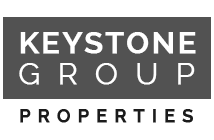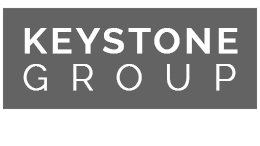Restructured HARP Helping More Underwater Homeowners to Refinance
For information about luxury real estate in Los Angeles County, Orange County and San Diego, call Bob Cumming of Keystone Group Properties at 310-496-8122. Keystone Group Properties serves discriminating buyers and sellers of exclusive California properties.
Restructured HARP Helping More Underwater Homeowners to Refinance
By Hudson Sangree and Phillip Reese of the Sacramento Bee
In the Sacramento area, about 180,000 households, or roughly half of all homeowners with mortgages, owe more than their homes are worth.
Many are stuck paying higher interest rates than today’s ultra-low average of about 3.5 percent on a 30-year loan.
For these families, refinancing to a lower rate would free up cash in a tough economy and help them stay in their houses. Yet until recently, large numbers of homeowners were shut out from refinancing because they owed far more than their homes are worth.
Today, a reworked federal effort called the Home Affordable Refinance Program, or HARP, is helping thousands more refinance, even if they’re deeply underwater on their mortgages.
The HARP restructuring – known as HARP 2.0 – took effect late last year and opened the floodgates for those who had been blocked from refinancing under an earlier, more-restrictive version of the program.
Through July, about 75,000 California homeowners had refinanced under HARP – roughly 25,000 more than the number that refinanced under the program during all of 2011.
“A lot of those folks had already applied for HARP and been declined,” said Tai Mamea, vice president for mortgage lending at Chase bank. “Sometimes they’ve been waiting for years.”
Chase customers have saved an average of $300 a month by refinancing through HARP, often halving their interest rates, he said.
But HARP 2.0, as it’s known, isn’t the cure-all that some predicted. For some homeowners, frustrations and roadblocks remain.
“I’ve helped lots of families refinance with HARP,” said Brent Wilson, a loan strategist with Comstock Mortgage in Sacramento. “But I still see a huge void of folks upside-down on loans who can’t refinance with HARP.”
A major reason, he said, is that their loans aren’t backed by mortgage giants Freddie Mac or Fannie Mae, a requirement for HARP refinancing. Being up-to-date on mortgage payments is another prerequisite.
Others might have low credit scores or high debt-to-income ratios, or they may lack cash reserves. Depending on the rules of individual lenders, such factors can prevent homeowners from successfully refinancing under HARP, Wilson said.
“You still have to be able to qualify,” he said. “It’s not as clear-cut as some people make it sound.”
Still, federal officials cleared away one of the biggest hurdles, he said.
The original version of HARP, introduced in 2009, allowed a loan-to-value ratio up to 125 percent. To be eligible, homeowners could only owe 25 percent more than their homes were worth. In other words, they could only be slightly underwater.
Many in the Sacramento region have sunk much deeper. One out of five of the region’s homeowners owe at least twice what their home is worth, according to online real estate tracking firm Zillow.
It’s a situation that’s common in other areas of California and in regions of the country – including Florida, Arizona and parts of the Northeast – that experienced a spike in housing prices followed by a calamitous free fall.
That’s why federal authorities restructured HARP so that it lets homeowners refinance regardless of the difference between loan amounts and home values.
Some lenders, however, have their own criteria that they layer on top of the HARP rules, experts said. They can impose loan-to-value caps of 105 percent or 150 percent.
But HARP 2.0 also gives borrowers more freedom to shop around if their current loan servicer won’t help, and mortgage experts say trying different lenders can be a useful strategy.
Folsom resident Angela Sing found refinancing under HARP 2.0 maddening but ultimately rewarding after going to several different lenders.
Sing and her family owed $440,000 on a first and second mortgage from 2003, but their home is worth only about $290,000. Her primary loan was interest only with a 6.8 percent rate.
“We didn’t want to walk away,” Sing said. “We signed the original papers, and we wanted to take responsibility.”
Sing tried twice to refinance under the old HARP program without success.
When the program was overhauled, she was rejected by her lender. So she tried another lender, with similar results. Finally, she tried a third lender and was successful, though not without more setbacks.
At one point, her credit score fell by a few points, and she had to start the whole process over.
“It was incredibly frustrating,” she said.
Earlier this month, after weeks of repeatedly faxing her financial documents to her lender, she’s refinanced into a 30-year loan with a 4.25 percent interest rate that lowered her payments by about $250 a month.
“You really have got to be persistent,” she said.
Pacific Palisades real estate for sale


